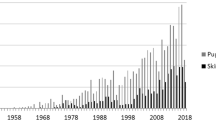Summary
The ERG changes in the human eye at an advanced state of dark adaptation were measured as a function of slow intermittent stimulation at rates ranging between one per second up to one every 30 seconds.
The description of the findings is preceded by an introductory section dealing with the wave pattern of the ERG and the mode of recovery of the individual potentials following light adaptation. This section is a brief account of a study which will be reported elsewhere in detail and explains the criteria used.
With the shortest stimulus rates used (from one per second up to one per three or four seconds) the effect on the ERG is largest and is already maximal in the electrical response to the second stimulus. The steady state thus established is maintained as long as both stimulus rate and intensity are unchanged.
With the increase in the interval between stimuli beyond four seconds up to about 15 seconds, the establishment of a steady state during intermittent stimulation is delayed, and the successive stimuli gradually build up an increasing response.
When the interval between stimuli is increased beyond 25 seconds, there is no difference visible in the pattern of the electrical responses.
The relationship of these findings to photochemical reactions and to an increase in the excitability of the retinal neural layers is briefly discussed. The latter is assumed to be caused by a solitary stimulus and to decline during about 25 seconds.
Résumé
Les changements de l'ERG ont été examinés dans l'oeil humain pendant l'adaptation à l'obscurité comme fonction d'une stimulation intermittente et lente. Les intervalles entre les stimuli étaient d'une seconde jusqu'à trente secondes.
La description des résultats est précédée par une introduction sur les critères employés ici et qui seront publiés en détail ailleurs. Cette introduction traite les différents aspects (‘Pattern’) des ondes de l'ERG et la mode de rétablissement des potentiels individuels après un adaptation à la lumière.
Avec des intervalles de la stimulation les plus brèves utilisées ici (1–4 sec.) l'effet sur l'ERG est le plus fort et est déjà au maximum dans la réponse électrique du second stimulus. Une condition stable (‘steady state’) est ainsi établie.
Avec la prolongation de l'intervalle entre les stimuli au delà de quatre secondes jusqu'à environ 15 secondes, l'établissement de ‘steady state’ pendant la stimulation intermittente est retardé et les stimuli successifs déclenchent graduellement une réponse agrandissante.
Quand l'intervalle entre deux stimuli est prolongée au delà de 25 secondes, il n'y a pas de différence visible dans le ‘pattern’ des réponses électriques.
La relation de ces résultats avec des réactions photochimiques et avec une augmentation de l'excitabilité des couches nerveuses de la rétine est discutée brièvement. Il est supposé que la dernière est le résultat d'un seul stimulus et baisse progressivement pendant les 25 secondes suivantes.
Zusammenfassung
Die Potentialänderungen im ERG des menschlichen Auges bei fortgeschrittener Dunkeladaptation wurden als Funktion von langsam intermittierenden Lichtreizen gemessen. Die Reizintervalle waren zwischen einer Sekunde and 30 Sekunden.
Der Beschreibung der Befunde geht ein einleitender Abschnitt über die hier verwendeten Kriterien voraus, dessen Inhalt an anderer Stelle im Detail veröffentlicht wird. Er behandelt die Wellenform des ERG und den Erholungsverlauf der einzelnen Potentiale nach Lichtadaptation.
Die hier verwendeten kürzesten Reizintervalle (1–4 Sek), lösen den stärksten Effekt auf das ERG aus. Dieser Effekt ist ausserdern schon in der Antwort auf den zweiten Lichtreiz maximal (steady state).
Mit der Verlängerung der Reizintervalle über vier Sekunden bis ungefähr 15 Sekunden verzögert sich die Ausbildung eines ‘steady state’ und die einzelnen Antworten vergrössern sich stufenweise zu Beginn der intermittierenden Belichtung mit jedem folgenden Lichtreiz.
Bei Reizintervallen von mehr als 25 Sekunden sind keine Unterschiede mehr in den Antworten festzustellen.
Die Verbindung dieser Ergebnisse mit einem photochemischen Prozess und mit einer Erhöhung der Erregbarkeit der neuralen Schichten der Retina ist kurz besprochen. Es wird angenommen, dass die letztere durch einen Einzelreiz ausgelöst wird und während der folgenden 25 Sekunden absinkt.
Similar content being viewed by others
Bibliography
Bornschein, H. & Goodman, G. (1957) Studies of the A-Wave in the Human Electroretinogram. A. M. A. Arch. Ophthal. 58, 431–437.
Author information
Authors and Affiliations
Additional information
This project was supported by a Fight for Sight Grant-in-Aid of the National Council to Combat Blindness, Inc., New York, N.Y.
Vision Research Laboratory, Hadassah University Hospital and Medical School.
Rights and permissions
About this article
Cite this article
Auerbach, E. The effect of slow intermittent light stimulation on the human ERG. Doc Ophthalmol 18, 376–391 (1964). https://doi.org/10.1007/BF00160589
Issue Date:
DOI: https://doi.org/10.1007/BF00160589




